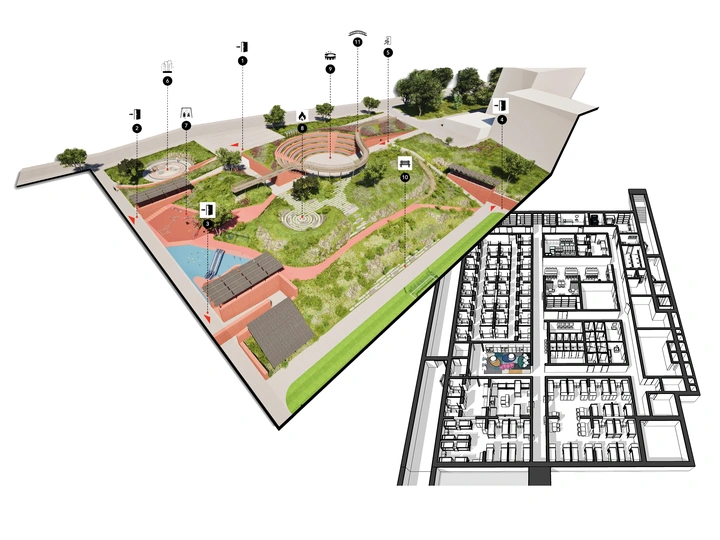Safe at Home: Dual-Use Underground Shelter

Valentyna Perevalova
Dmytro Petrukha
Mariia Sitko
SAVE AT HOME Bomb Shelter Group is an interdisciplinary team of Ukrainian professionals working at the intersection of architecture, engineering, design, and project management. We develop modern, scalable dual-purpose shelters — designed to protect people during crises and serve communities in times of peace.
The team was formed within the framework of the CAS Rebuild Ukraine program at the Bern University of Applied Sciences (BFH, Switzerland) and continues to work on the development of an innovative civil protection system that combines Swiss expertise with Ukrainian realities.
- Valentyna Perevalova – Architect and interior designer with over 15 years of experience in the implementation of complex spatial solutions. A participant in international competitions and exhibitions, she specializes in adaptive architecture and urban approaches to civilian safety.
- Dmytro Petrukha – Civil engineer with expertise in structural design and crisis-resilient infrastructure. He has practical experience implementing construction standards in emergency conditions.
- Maryna Homenyuk – Project manager with a strong background in strategic planning, cross-sectoral collaboration, and international partnerships.
- Mariia Sitko – Graphic, industrial, product and spatial designer, videographer, and visual communication specialist. She creates inclusive and functional visual systems that combine aesthetics with purpose.
We conduct needs assessments across Ukrainian communities, analyze shelter typologies, and implement solutions that could form the foundation of a national civil protection framework, addressing multi-dimensional threats with long-term impact.
The Russian war against Ukraine has revealed a critical shortage and deteriorated condition of civil protection shelters. Many of them pose an additional threat due to structural unsuitability and outdated design. Civilian infrastructure remains a primary target of attacks, as illustrated by missile strikes on Sumy and Kryvyi Rih in April 2025. Despite ongoing efforts to restore and construct shelters for schools and hospitals, the population remains insufficiently protected. Most existing shelters are adapted basements in residential buildings, which risk collapse under attack.
Our team analyzed the national shelter landscape, including typologies, construction methods, and associated costs. We identified a major gap: while standard modular shelters exist for institutions, there is a lack of scalable, high-protection CBRN grade for the civilians. We conducted stakeholder interviews and behavioral studies to understand why people often avoid shelters and integrated these findings into our design. The spatial layout was tested at the SCDH.
The result is a scalable, multifunctional underground CBRN-class shelter for 300+ people, combining a high level of protection (according to Ukrainian norms) with psychological comfort and dual-purpose use. In peacetime, it functions as a community space. We see this as a model for a future national shelter network with centralized governance and sustainable funding.
The first pilot is being prepared in partnership with the Lutsk City Council, which has officially confirmed its interest. The shelter has been designed with inclusivity in mind—for children, the elderly, and people with disabilities. It also includes environmentally responsible features such as solar energy systems and durable, recyclable materials. Thanks to modular flexibility and adaptive planning, the concept is scalable for use in other regions—including Georgia, the Balkans, Moldova, or Southern Europe—in response to climate-related and security risks.